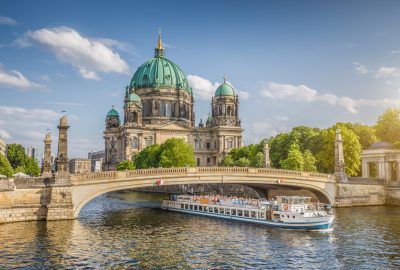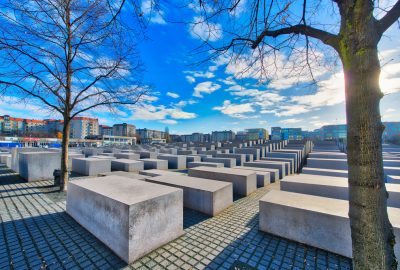Long time ago I always thought about Berlin as a particularly unpleasant city, Moscow Lite, so to say. Everything big, intimidating, towering architecture, victory arches around every corner and military marches every weekend with Carl Orff’s Carmina Burana playing from speakers. Tall, blonde people with blue eyes and heads held up high, looking down on everyone else. Don’t blame me: I was young and naïve. When I first visited Berlin I was baffled, it felt like this beautiful, huge garden was seemingly growing out of grey concrete. Germany’s capital became a wondrous place on earth for all kinds of people and an economic powerhouse. There are a few things you just need to check off when being in Berlin; the Holocaust Memorial, the Brandenburg Gate, and the Reichstag. In case you don’t care all that much about lingering in the past visit the city in early autumn at the occasion of the Oktoberfest (yes not only Munich has these festivities) and have a taste of the delicious beer, sausages, sauerkraut, and maybe local women too. Amsterdam might have the reputation of being liberal and tolerant but I think that nowadays Berlin lives up more to this reputation. What I understood from my gay friends is that compared to Amsterdam they feel even more free and safe when they are partying in Berlin.

The Berliner Dom in baroque style with its world-famous Sauer organ is one of the most important churches in Berlin
Arts and history lovers can spend whole days on Museum Island, which is on the UNESCO-list of World Heritage Sites and is situated in the middle of the Spree at the eastern end of Unter den Linden. Here you will find grouped together nothing less than five museums. Most likely the most famous of them is the Neues Museum, which has the Egyptian bust of Nefertiti in its collection. The Pergamonmuseum, one of the world’ s leading archaeological museums is also on Museum Island. The Jewish Museum (Jüdisches Museum) in the famous Kreuzberg district will tell you the story of Jews in Europe over the last few thousand years. It is incredible rich in information and communicates with the visitor through all kinds of arts, videos, documentation and interactive exhibitions. The building designed by the controversial architect Daniel Libeskind is a piece of art on its own. Its unique design is overwhelming and based on an exploding David Star, with interior spaces disappearing into angles, and symbolizes the Jewish lifestyle before, during, and after the Holocaust. In the centre, nearby the Potzdammer Platz you will find the Holocaust Memorial. The design of this labyrinth of gloomy grey concrete slaps of uneven heights was inspired by the crowded headstones in the Old Jewish Cemetery of Prague. Conceived already in 1993, the controversial project was not opened until 2005. To really engage with the controversial memorial monument designed by Peter Eisenmann you really need to go inside and experience its shifts in perspective and light, which can cause feelings of distance, isolation, and even claustrophobia.

Holocaust Memorial in Berlin: 2710 concrete gray blocks forming a labyrinth with an underground exhibition space
For another impressive but also more fun experience you can do a Berlin Wall walking tour. The Berlin Wall was not only marking the border between West-Germany (BRD) and East-Germany (DDR). More than that, it was a painfully confronting symbol of the Iron Curtain between East and West in Europe for many decades until it came down on 9 November 1989. Most tourists in Berlin visit Checkpoint Charlie, the world-famous east-west border control during the Cold War. But if your agenda allows be sure to go also for a walk along the remains of the Wall by the Spree in the Friedrichshain district. A stretch of 1.3 kilometres; the East Side Gallery, makes now up for the longest open-air gallery in the world. Immediately after the wall came down in November 1989, 118 artists from 21 countries began painting the East Side Gallery. In over hundred paintings the artists depicted and commented on the political landslide changes occurring in the turbulent years 1989/1990. Some of the graffiti works and paintings at the East Side Gallery have become icons on their own. Dmitri Vrubel’s Fraternal Kiss for instance that depicts the former communist leaders Erich Honecker (DDR) and Leonid Brezhnev (USSR) passionately making out. And also Birgit Kinders’s painting, which is a very realistic picture of a Trabant breaking through the wall has become world-famous. Meanwhile they must have been reproduced on millions of postcards, posters, mugs and magnets.
When you are done with all the sightseeing you can prepare to paint the town red in Berlin because it dubs the best clubs in Europe and especially the electronic music and DJ scene is simply awesome. But dancing the night away is not possible with an empty stomach, so head over to Kreuzberg. This district is not only home to the largest Turkish community outside of Turkey but also filled to the brim with many cool bars and exotic restaurants that serve great quality food of all kind of cuisines. And rest assured your credit card will not easily run red in the German capital. Another great thing about Berlin is that is remarkable cheap for a European capital, which also explains why it is still such a popular city amongst students, artists and bohemians.



No one commented yet. Be the first.